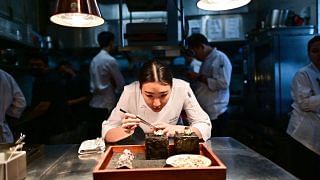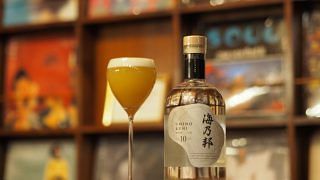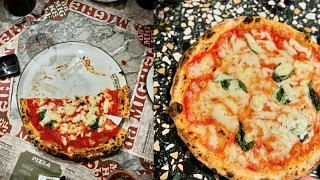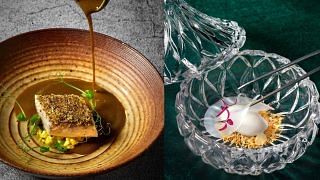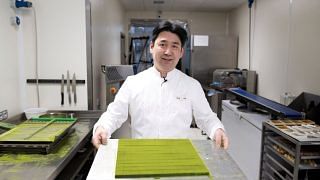[dropcap size=small]T[/dropcap]he one-Michelin-star restaurant sits on the beautifully verdant grounds of its German chef-owners’ residence. The seasonal tasting menu starts with an assortment of nibbles: “pretzel & obatzda”, “zwiebelkuchen”, “eisbeinsulze”, “fischbrotchen”.
The names roll effortlessly off the tongue of the enthusiastic young server. And, when he brings to the table a rendition of “Toast Hawaii” – the odd sandwich of ham, cheese, tinned pineapple and maraschino cherry, created in the 1950s by one of Germany’s first television chefs – he lets on that it was his childhood favourite. It feels as if one is at a quaint family restaurant in the German countryside. Here’s the thing though: Bass, the server, is Thai, albeit one who spent 11 years in Germany. And Restaurant Suhring is situated in the heart of Bangkok.
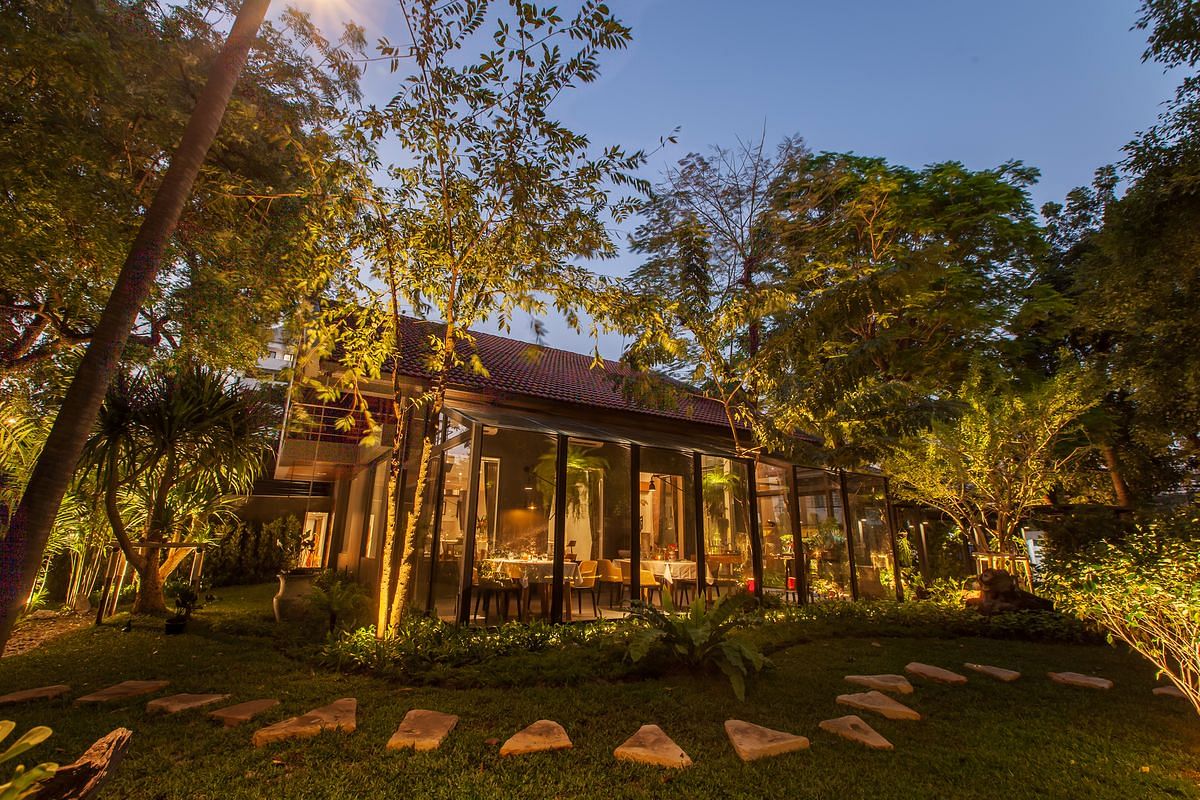
From 15 baht-a-bowl (S$0.65) boat noodles served in an earthy, spicy broth thickened with pig’s blood and topped with pork crackling, to salt-packed fish, simply grilled by the roadside, Bangkok offers a plethora of textures and flavours for the hungry traveller seeking a culinary adventure. It is easy to forget that beyond the estimated 380,000 street vendors peddling a cornucopia of colourful Thai street food for what many tourists consider spare change, there is also a sophisticated dining scene. And this is one that has evolved at lightning speed over the last decade, attracting talent such as Thomas and Mathias Suhring to take root in the city. The brothers arrived a decade ago to work at Mezzaluna.
(RELATED: Here’s the full, address-furnished, inaugural Bangkok Michelin Guide, unveiled in December 2017.)
“Opening Restaurant Suhring wouldn’t have been possible 10 years ago. There were very real limitations – such as getting to indent fresh supply of meats only every 15 days. Also, the diners did not have the readiness to accept our cuisine,” says Thomas. “Yet, even then, we could see that the place was changing.”
THE MICHELIN GUIDE BANGKOK 2018 LIST

The city’s restaurant scene had already caught the attention of globe-trotting epicureans when some of its top restaurants got ranked high on the inaugural edition of Asia’s 50 Best Restaurants list in 2012. Last year’s edition saw nine of them. Steadily, the pool of sophisticated diners has grown. The younger Thais are also getting more well-travelled and adventurous with their taste preferences. Evolving in tandem are the suppliers and farmers. “These days, we can easily import whatever ingredient we wish, and there are local farmers who are happy to grow specific things on consignment,” shares Thomas.
In 2015, the brothers – with the support of Gaggan Anand, the modernist Indian chef who has been sweeping international awards since his eponymous restaurant opened in Bangkok in 2010 – decided to strike out on their own. There are parallels to the Suhring brothers’ story in the background of many chefs who have populated Bangkok’s F&B landscape; think the likes of David Thompson and Anand.
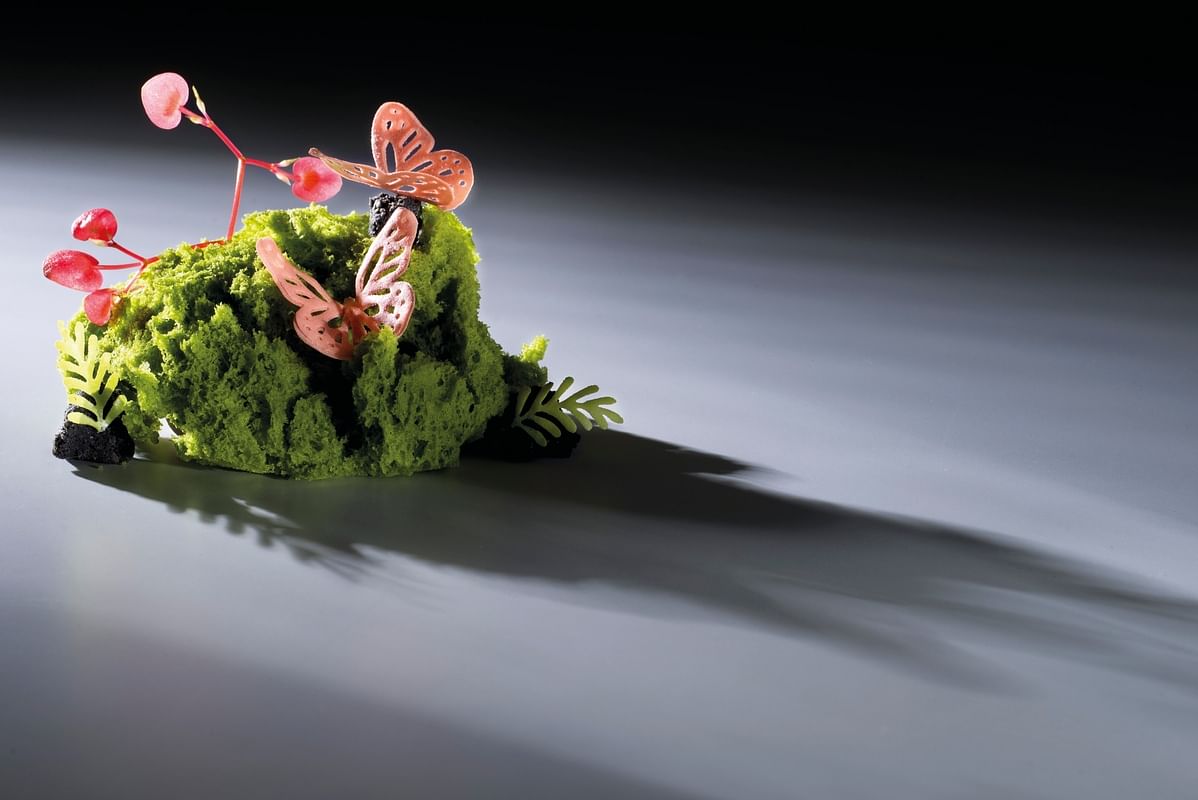
More have joined the fray, such as Australia-trained Thai chef Bee Satongun, who opened Paste in 2013 with her husband, Australian chef Jason Bailey. The Michelin Guide Bangkok – unveiled in December 2017 – serves precisely to put the spotlight on this oft-forgotten segment, shaped by world-class chefs who believe in the city’s potential as a food capital beyond its cheap and cheerful offerings.
GASTRONOMY FOR TOURISTS
As with the launch of any edition, Michelin Guide Bangkok 2018 faced plenty of criticism once the list of 14 one-star and just three two-star restaurants were announced. Many wondered why no restaurant was deemed worthy of the vaunted three-star status. But ringing even louder was the question: Why was Jay Fai the one and only local food stall – among hundreds of thousands – given a star rating? Of note is the fact that 72 year-old Jay Fai is best known for her crab-stuffed omelettes which, priced per plate at 800 baht (S$34) upwards, are a pretty luxe affair by street food standards.
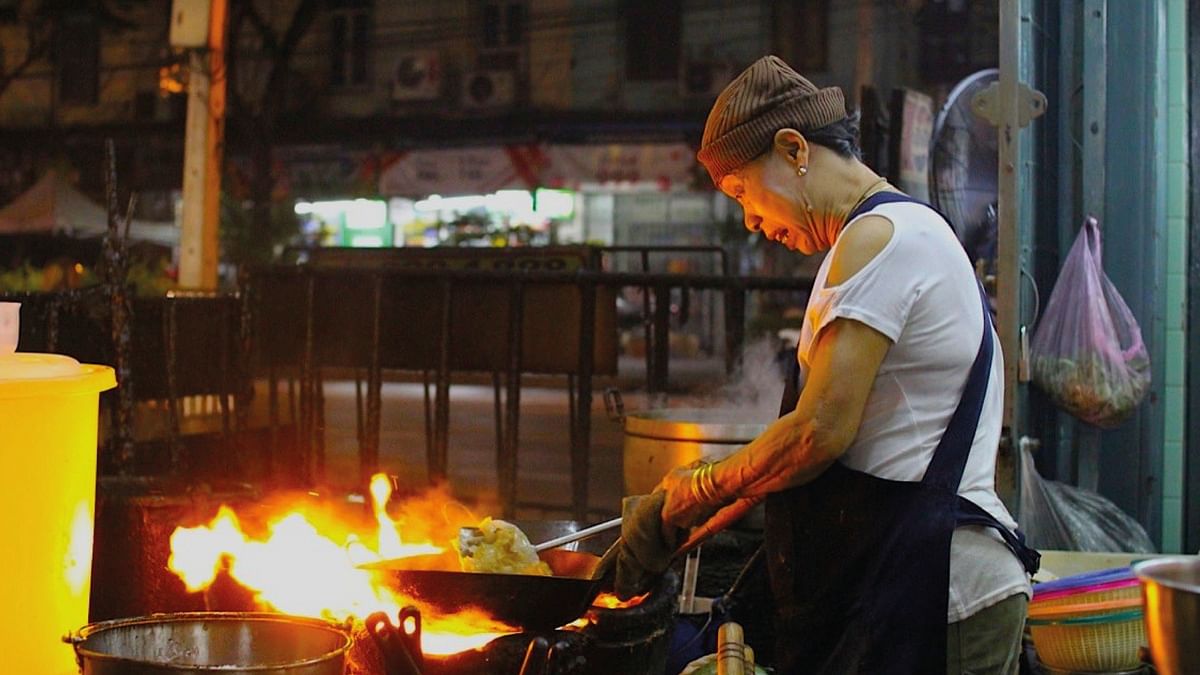
There will be no official answers to that question – and Michael Ellis, the guide’s international director, maintains time and again that the guide is completely autonomous when it comes to curating the list of restaurants. Yet one cannot help but look at how the guide arrived in Bangkok. Ellis shares that the city had been on the guide’s international expansion road map since he started his appointment in 2010. However, it was under the auspices of the Tourism Authority of Thailand (TAT) that the Bangkok edition was finally launched last year. To be precise, the invitation came in the form of a 144 million baht partnership spanning five years.
(RELATED: The Peak team discusses why you should – or shouldn’t – refer to the Michelin Guide.)
This is a time of change in Bangkok – and one that has the might of the government behind it. Some industry observers see the guide launch as part of the government’s effort to reposition Bangkok as a food destination. It is not just a place with night markets that backpackers on a shoestring budget can feast at. This is also where high net worth jet-setters can pamper themselves in luxurious fashion, and dine like royalty.
An official TAT release says that the guide is meant to boost overall food spending by tourists by 10 per cent. Food spending made up 20 per cent of Thailand’s total tourism in 2016. Even Ellis agrees – quite proudly too – that the guide has a very pronounced economic impact. “The food tourism sector – well-heeled people who plan their vacations around where to eat – is very attractive to all tourism boards, as this demographic injects a significant amount into the economy. The stars, as a widely recognised symbol of quality that is homogeneous across the different cities, serve to map out the routes for these travellers.”
So some might say that the bilingual Michelin Guide Bangkok is irrelevant to the man on the street who already navigates the alleys and laneways for his favourite local food. It might even have little value to the seasoned traveller with connections to insider haunts. But that would be missing the point of the guide. For a world of holidaymakers unfamiliar with the region, the Michelin Guide is a light tower, directing them to destination restaurants that might previously have been under the radar.
To those questioning the guide’s credibility in assessing Thai cuisine, Thompson – chef, author, and one of the biggest champions of Thai cuisine internationally – says this: The Michelin Guide is a recognition of Bangkok restaurants, and not the cuisine. “It has always been a great food city, and now it is being recognised as a restaurant city.” And that is indeed the purpose of the guide.
And that is perhaps why, out of the hundreds of thousands of street food vendors, just 27 of them are featured in the book. Ellis emphasises that the guide is unable to feature itinerant hawkers with no physical addresses, but this still seems a small number, compared to the 58 hawker stalls featured in Singapore’s inaugural edition. It is interesting, though, to note that while the street food listings are given short two-line descriptions in the Singapore guide (as per how it is done in the Hong Kong and Macau guide), those in the Bangkok book are given full descriptions, like all other listings.
MONEY MONEY MONEY
Parallels can be drawn between the Bangkok and Singapore guides, the latter being backed by the Singapore Tourism Board. Like the Bangkok guide that got onto front page news with Jay Fai’s star, Singapore’s 2016 launch edition is probably best known for awarding stars to two hawkers – Hill Street Tai Hwa Pork Noodle and Hong Kong Soy Sauce Chicken Rice & Noodle.
For a country that has already been in the international limelight for its celebrity chef restaurants – which has grown at an exponential rate since Marina Bay Sands was launched in 2007 with an army of star chefs, which is part of the resort’s key attraction – this controversy serves to acknowledge the pedigree of Singapore’s oft-talked about local fare. Also, given that visitors from China dominate the country’s tourism receipts, with a 36 per cent increase in arrivals last year, it is not surprising that the Singapore edition is produced in English and Chinese. Michelin Guide Singapore was given the Breakthrough Contribution to Tourism award at Singapore Tourism Awards 2017, for its significant impact on the growth of Singapore’s tourism sector.
THE RECONNAISSANCE
Some might say that the guide is “selling out” by taking government sponsorship. However, Michelin has always openly stated that publishing the guide is a marketing expense that does not make money. Getting sponsorship – be it from corporations such as Melco Resorts group for the Hong Kong and Macau guide (rather than the Hong Kong tourism board, as widely speculated) – is only understandable.
And, as with any business relationship, some will be more trying than others. In Seoul, where the Michelin guide was launched last year, the relationship between sponsor and guide isn’t quite as peachy as that in Singapore. The South Korean government is reportedly paying about two billion Korean won (S$2.5 million) for a four-year commitment to produce the red book. However, according to a feature in The Washington Post, the South Korean media was abuzz with discontent following the book launch. A Korean politician even complained about erroneous descriptions of Korean food in the guide.
A SEA CHANGE
Love it or loath it, the Michelin Guide has very definite impact – and it goes beyond exploding voicemail boxes and missed engagements. In the 30 cities where it is present, restaurants listed within the guide have reported revenue increase of around 10 to 20 per cent, whereas those awarded stars have seen as much as a double-fold increase in earnings.
It also attracts talent. “Putting the spotlight on a city draws chefs,” says Ellis, who worked as a chef in Paris in his youth. “You want to work at a starred restaurant. The experience gives you a seal of approval, saying that you know how to choose your product, how to season, and have mastered your basic techniques. The restaurants in the guide will be getting CVs from chefs who want to work for them.”
The stars also motivate chefs. Head chef Achara To-Ussami of the elegant Erawan Tea Room in Bangkok, which received a Michelin Plate, says she knew little about the guide beforehand. “Now that we have a Michelin Plate, the stars are something to work towards,” she says. “It is a pressure, but also an honour.”
With the industry pushed to higher standards, the supply chain around the culinary community will also evolve. “Farmers can start growing those organic baby carrots and suppliers can start bringing in high quality ingredients, because now there is a market for that,” says Ellis.
Yet the ripple effect of the guide’s influence goes beyond that. At the point when the stars were announced, Bass was in his hometown a three-hour drive away from Bangkok, waiting for his parents to arrive from Germany. He had no idea that, when he returned to work, he would be part of a Michelin-star establishment, making him hot property if he ever decides to seek greener pastures within the industry.
Before that day, To-Ussami’s young son wanted to be a policeman. But when he learnt that his mother’s restaurant got into the guide that was featured on the television news segment, he made up his mind to be a chef when he grows up. They might not become chefs, but without them knowing, their lives have been changed by a restaurant guide. Hopefully, it is all for the better.
What chefs from 2018’s new Michelin-starred restaurants in Singapore had to say





